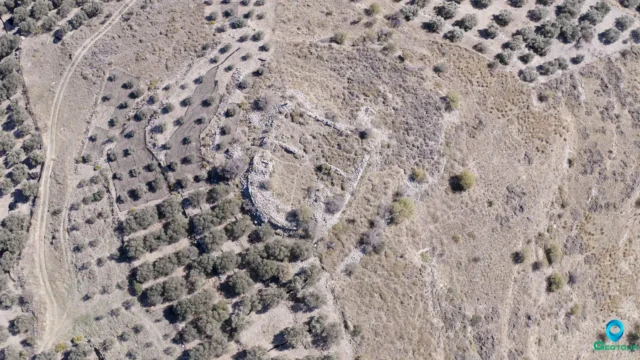The Church of Christ the Saviour is located in the Lazopouliana neighborhood in the village of Temenia, in the Selino region of Chania, Crete. This small church was built in two distinct phases. The original structure, a single-aisled building with a barrel vault, dates back to the 13th century. Later, in the 14th century, a second section topped with a dome was added to the west.
The Frescoes
The church is adorned with frescoes painted in the late 13th century. These murals are notable for their Western influences, which is somewhat unexpected given the remote, rural location of the church. The artist responsible for these frescoes also painted the churches of Agios Dimitrios in Leivada and Agios Fotios in Agioi Theodoroi, both in the Selino region.
The frescoes inside the Church of Christ the Saviour depict a variety of religious scenes. In the conch of the apse, there is a depiction of the Deesis (Christ enthroned between the Virgin Mary and John the Baptist). The Ascension is portrayed on the arch. In the main body of the church, various saints are depicted in the lower register, while scenes from the Gospels, with an emphasis on the Passion of Christ, are painted on the arch and the west wall.
Architectural Significance
The Church of Christ the Saviour is a typical example of Byzantine architecture in Crete, showcasing the evolution of religious architecture on the island. The initial 13th-century structure reflects a simple, common style for rural churches of that period. The 14th-century addition of a domed narthex demonstrates a trend towards more complex church designs, often incorporating elements like domes and multiple aisles.
The Artist and his Style
The frescoes provide valuable insight into artistic exchanges between Crete and the West during the late Byzantine period. The artist’s adoption of Western stylistic elements suggests a degree of cultural connectivity, even in this isolated part of Crete. This blend of Byzantine and Western artistic traditions is a characteristic feature of Cretan art during this era.
Preservation and Accessibility
The Church of Christ the Saviour is now under the jurisdiction of the Ephorate of Antiquities of Chania. It stands as a testament to the enduring religious heritage of the Selino region and provides a glimpse into the artistic and cultural landscape of Crete during the Byzantine period. The church is usually open to the public, but it is advisable to check with local authorities or the Ephorate of Antiquities for current access information.
Key points
Construction Period: 13th and 14th centuries
Location: Lazopouliana, Temenia, Selino, Chania, Crete, Greece
Historical Significance: Illustrates the evolution of Byzantine architecture in Crete and the influence of Western artistic styles.
Current Status: Preserved by the Ephorate of Antiquities of Chania; generally open to the public.



















